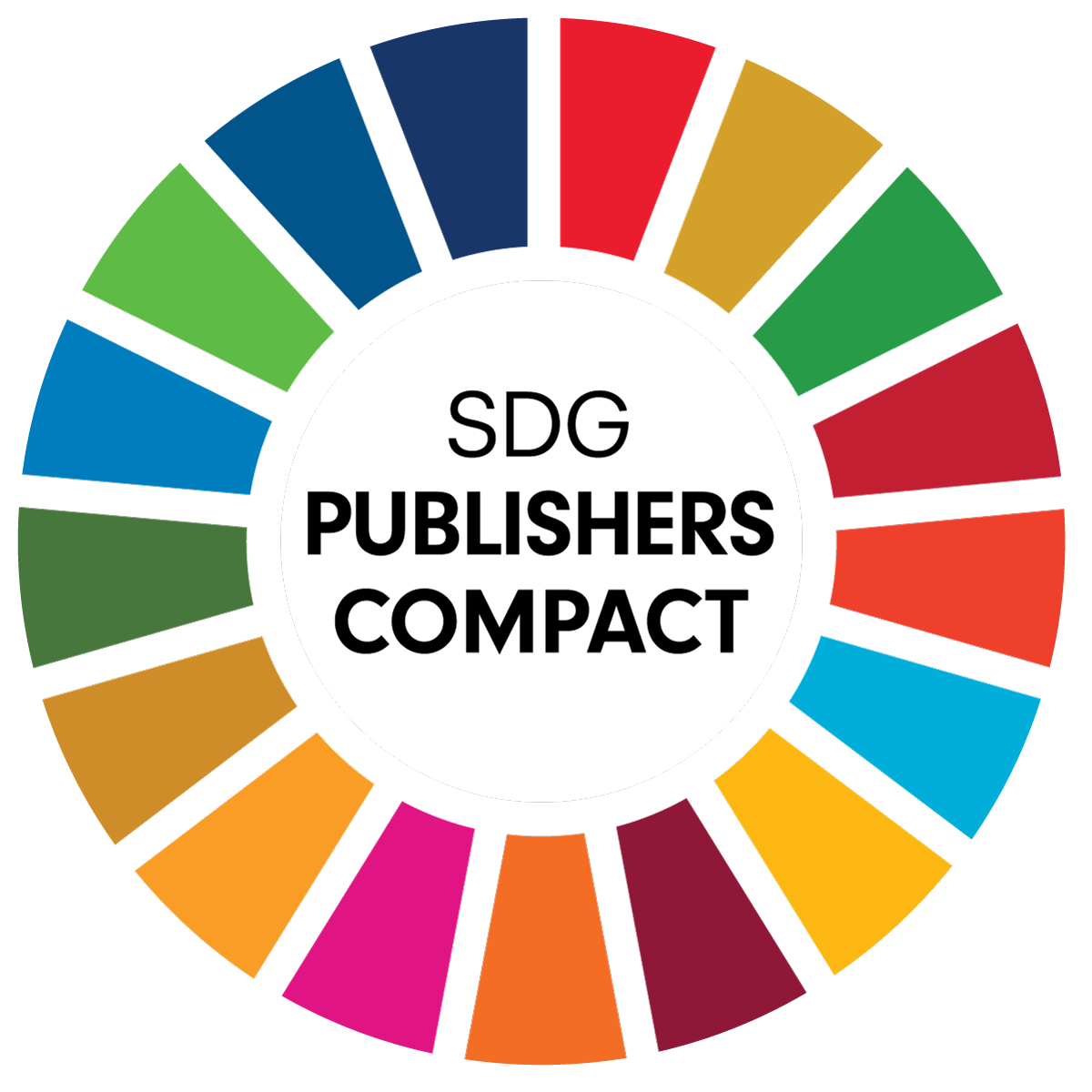Range Volatility Spillover across Sectoral Stock Indices during COVID 19 Pandemic: Evidence from Indian Stock Market
-
Susanta DATTA Seva Sadan’s R. K. Talreja College of Arts, Science and Commerce, University of Mumbai, India
This study examines volatility spillover across sectoral stock indices in India, an emerging market economy, during the COVID-19 pandemic. Our research makes three key contributions: (a) incorporating range volatility measures to capture the pandemic's impact on stock market volatility, (b) providing a comparative assessment of volatility spillover across sectoral indices, and (c) identifying evidence of volatility spillover across different sectoral indices. Using daily historical open, high, low, and close price data for 11 NIFTY sectoral indices during first wave of pandemic; the findings reveal that open-to-close returns outperform close-to-close returns in forecasting sectoral stock indices, underscoring the importance of incorporating range-based volatility measures in forecasting models. Furthermore, the multivariate Range DCC model confirms significant volatility spillover across sectoral indices, highlighting the interconnectedness of Indian sectoral stock markets during crisis periods. The findings offer actionable insights for the Securities and Exchange Board of India (SEBI) to develop targeted, sectoral-level market surveillance strategies and robust risk management frameworks, ultimately enhancing the resilience of India's capital markets in post-pandemic scenarios.
Copyright© 2025 The Author(s). This article is distributed under the terms of the license CC-BY 4.0., which permits any further distribution in any medium, provided the original work is properly cited.
Datta, S., & Hatekar, N. (2025). Range volatility spillover across Sectoral Stock Indices during COVID 19 pandemic: Evidence from Indian stock market. Journal of Applied Economic Sciences, Volume XX, Spring, 1(87), 79 – 100 https://doi.org/10.57017/jaes.v20.1(87).06
Akhtaruzzaman, M., Boubaker, S., & Sensoy, A. (2020). Financial contagion during COVID–19 crisis. Finance Research Letter. http://dx.doi.org/10.1016/j.frl.2020.101604
Alizadeh, S., Brandt, M. W., & Diebold, F. X. (2002). Range-based estimation of stochastic volatility models. Journal of Finance, 57, 1047−1091. https://doi.org/10.1111/1540-6261.00454
Andersen, T. & Bollerslev, T. (1997). Heterogeneous information arrivals and return volatility dynamics: uncovering the long run-in high frequency returns. Journal of Finance, 52, 975−1005. https://doi.org/10.1111/j.1540-6261.1997.tb02722.x
Bai, J., & Perron, P. (1998). Estimating and testing linear models with multiple structural changes. Econometrica, 47-78. https://doi.org/10.2307/2998540
Bai, J., & Perron, P. (2003). Computation and analysis of multiple structural change models. Journal of Applied Econometrics, 18(1), 1-22. https://doi.org/10.1002/jae.659
Baker, S. R., Bloom, N., Davis, S. J., Kost, K. J., Sammon, M. C. & Viratyosin, T. (2020). The unprecedented stock market impact of COVID-19. National Bureau of Economic Research Working Paper (26945). https://www.nber.org/papers/w26945.
Baldwin, R. & Weder di Mauro, B. (eds) (2020). Mitigating the COVID Economic Crisis: Act Fast and Do Whatever It Takes, CEPR Press, Paris & London. https://cepr.org/publications/books-and-reports/mitigating-covid-economic-crisis-act-fast-and-do-whatever-it-takes
Bohdan, M. P. (2020). Regression Approach for Modelling COVID-19 Spread and its Impact on Stock Market. https://doi.org/10.48550/arXiv.2004.01489
Bollerslev, T. (1986). Generalized autoregressive conditional heteroskedasticity. Journal of Econometrics, 31(3), 307-327. https://doi.org/10.1016/0304-4076(86)90063-1
Brandt, M. & Jones, C. (2006) Volatility Forecasting with Range-Based EGARCH Models. Journal of Business and Economic Statistics, 24, 470-486. http://dx.doi.org/10.1198/073500106000000206
Capelle-Blancard, G. & Desroziers, A. (2020). The Stock Market Is not the Economy? Insights from the COVID-19 Crisis (June 16, 2020). CEPR Covid Economics. https://ssrn.com/abstract=3638208 or http://dx.doi.org/10.2139/ssrn.3638208
Chou, R. Y., Chou, H., & Liu, N. (2015). Range volatility: A review of models and empirical studies. In C. F. Lee & J. C. Lee (Eds.), Handbook of Financial Econometrics and Statistics (pp. 2029–2050). Springer New York. https://doi.org/10.1007/978-1-4614-7750-1_74
Corbet, S., Larkin, C., & Lucey, B. (2020). The contagion effects of the covid-19 pandemic: Evidence from gold and cryptocurrencies. Finance Research Letter. http://dx.doi.org/10.1016/j.frl.2020.101554
Datta, S. (2019). Range Volatility in Commodity Future Price Index: Evidences from Indian Multi Commodity Exchange. International Journal of Advance and Innovative Research, Volume 6, Issue 2 (XIV). https://www.researchgate.net/publication/334362099
Datta, S. & Hatekar, N. (2024). Modelling range volatility in currency bid - ask spreads: Implications for financial resilience and sustainable development in emerging market economies. Journal of Global Sustainability and Development, Volume I, Issue 1, 27 – 40. https://doi.org/10.57017/jgsd.v1.i1
Engle, R. F. (1982). Autoregressive conditional heteroscedasticity with estimates of the variance of United Kingdom inflation. Econometrica, 50, 987-1007. https://doi.org/10.2307/1912773
Engle, R. F. (2002). Dynamic Conditional Correlation: A Simple Class of Multivariate GARCH Models. Journal of Business and Economic Statistics, 20, 339-350. http://dx.doi.org/10.1198/073500102288618487
Fiszeder P., Fałdziński, M. & Molnár, P. (2019). Range-based DCC models for covariance and value-at-risk forecasting. Journal of Empirical Finance, Volume 54, 58- 76. https://doi.org/10.1016/j.jempfin.2019.08.004
Garman, M. B., & Klass, M. J. (1980). On the Estimation of Security Price Volatilities from Historical Data. The Journal of Business, 53(1), 67–78. http://www.jstor.org/stable/2352358
Hanspal, T. Weber, A. & Wohlfart, J. (2020). Income and Wealth Shocks and Expectations during the COVID-19 Pandemic. CESifo Working Paper, No. 8244, Center for Economic Studies and Ifo Institute (CESifo), Munich. https://hdl.handle.net/10419/216640
Haroon, O. & Rizvi, S. A. R. (2020a). COVID-19: Media coverage and financial markets behavior - A sectoral inquiry. Journal of Behavioral and Experimental Finance, Volume 27, 100343. http://dx.doi.org/10.1016/j.jbef.2020.100343
Haroon, O. & Rizvi, S. A. R. (2020b). Flatten the curve and stock market liquidity–an inquiry into emerging economies. Emerging Market Finance Trade, 56(10), 2151–2161. http://dx.doi.org/10.1080/1540496X.2020.1784716
McKibbin, Warwick J. & Fernando, R. (2020). The Global Macroeconomic Impacts of COVID-19: Seven Scenarios. CAMA Working Paper No. 19/2020. http://dx.doi.org/10.2139/ssrn.3547729
Molnár, P. (2012). Properties of Range-Based Volatility Estimators. International Review of Financial Analysis, Volume 23, 20-29, https://ssrn.com/abstract=2691435 .
Molnar, P. (2016). High-low range in GARCH models of stock return volatility. Applied Economics, 48(51), 4977-4991. https://doi.org/10.1080/00036846.2016.1170929
Padhan, R. & Prabheesh, K. P. (2021). The Economics of COVID 19 pandemic: A Survey. Economic Analysis and Policy, 70, 220–237. https://doi.org/10.1016/j.eap.2021.02.012
Parkinson, M. (1980). The extreme value method for estimating the variance of the rate of return. Journal of Business, 53, 61–65. https://www.jstor.org/stable/2352357
Prabheesh, K. P., Garg, B., & Padhan, R. (2020a). Time-varying dependence between stock markets and oil prices during COVID-19: The case of net oil-exporting countries. Economics Bulletin, 40(3), 2408–2418, http://www.accessecon.com/Pubs/EB/2020/Volume40/EB-20-V40-I3-P210.pdf
Prabheesh, K. P., Padhan, R., & Garg, B. (2020b). COVID-19 and the oil price–stock market nexus: Evidence from net oil-importing countries. Energy Research Letters, 1(2). http://dx.doi.org/10.46557/001c.13745
Rogers, L. C. & Satchell, S. E. (1991) Estimating Variance from High, Low and Closing Prices. The Annals of Applied Probability, 1, 504-512. https://doi.org/10.1214/aoap/1177005835
Wiggins, J. (1991). Empirical tests of the bias and efficiency of the extreme-value variance estimator for common stocks. Journal of Business, 64, 417-432. https://ideas.repec.org/a/ucp/jnlbus/v64y1991i3p417-32.html
Xiaolin, H. & Zhigang, Q. (2020). How does China’s stock market react to the announcement of the COVID-19 pandemic lockdown? Economic and Political Studies. https://doi.org/10.1080/20954816.2020.1780695
Yang, D. & Zhang, Q. (2000). Drift-independent volatility estimation based on high, low, open, and closing Prices. Journal of Business, 73, 477-491. http://dx.doi.org/10.1086/209650




